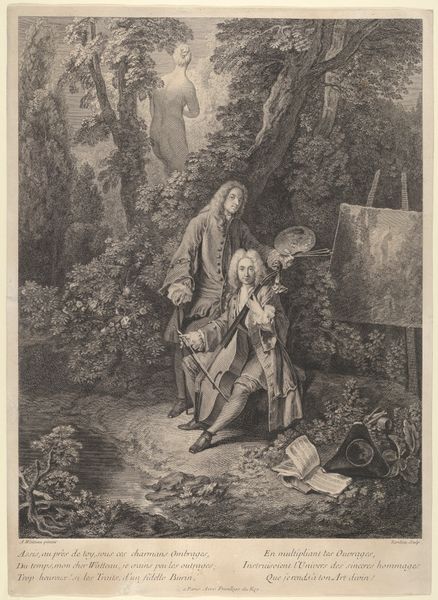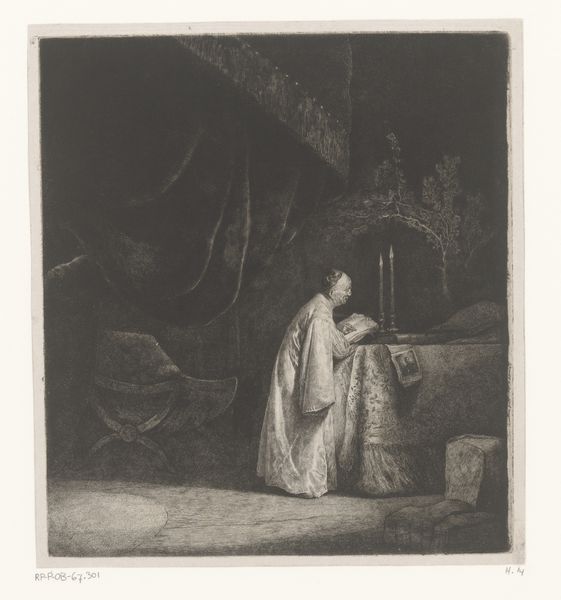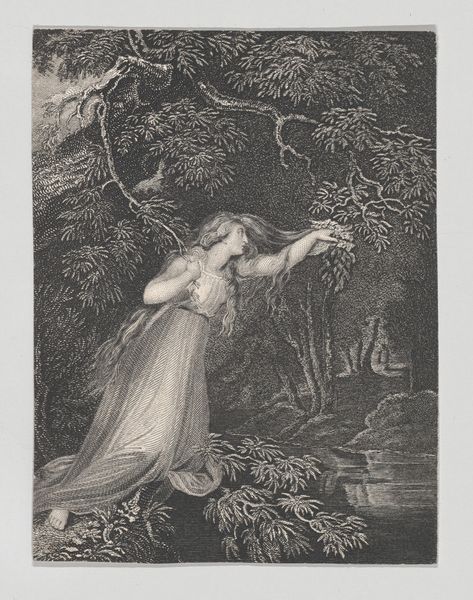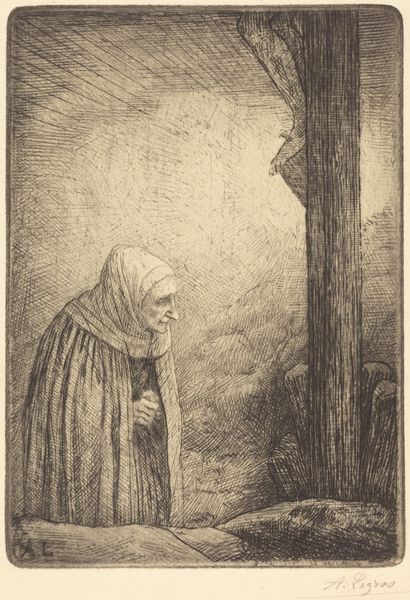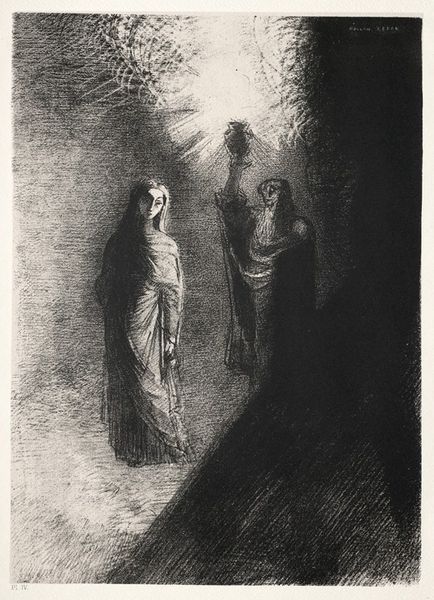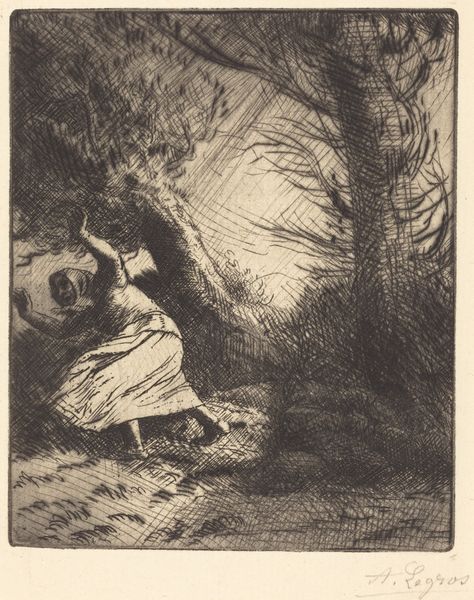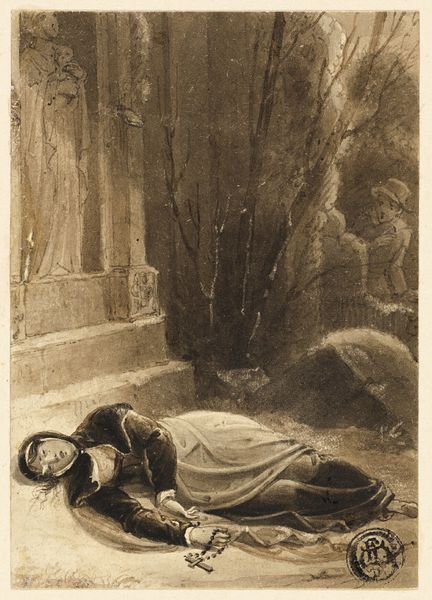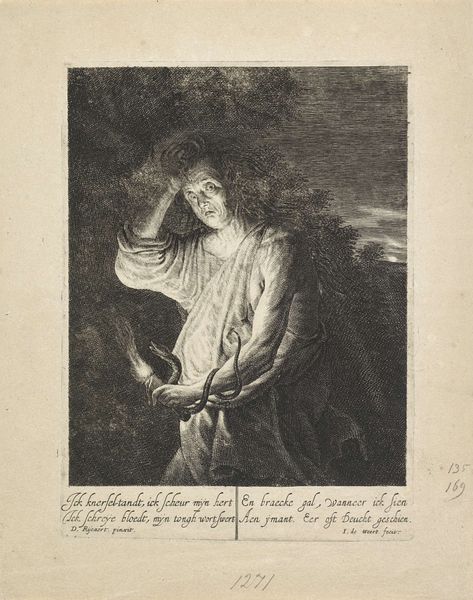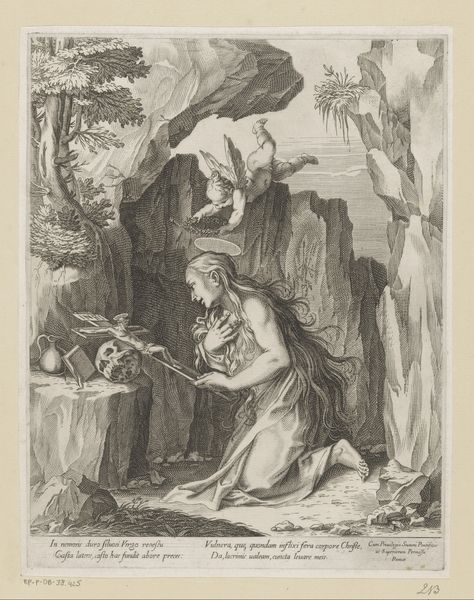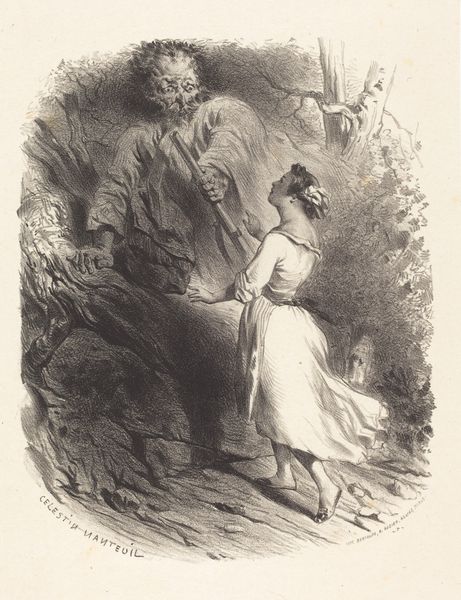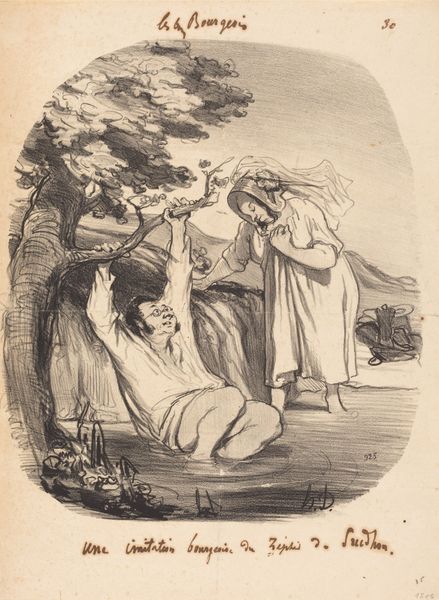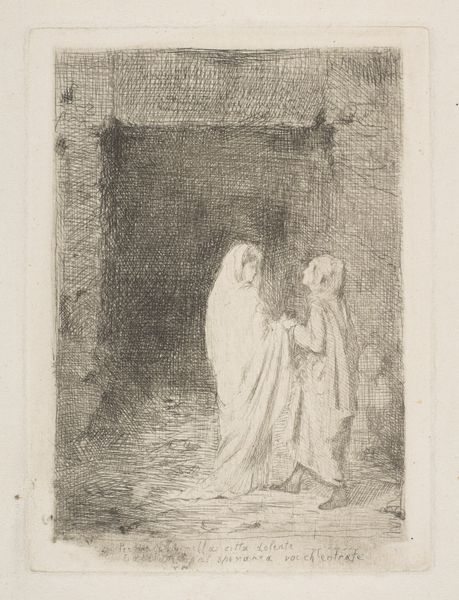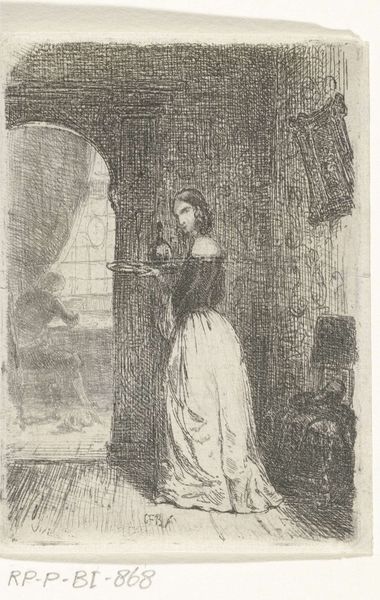
Hilsindis tijdens het gebed bespied door haar echtgenoot Ansfridus, 997 1839 - 1841
0:00
0:00
drawing, engraving
#
pencil drawn
#
drawing
#
16_19th-century
#
pencil sketch
#
landscape
#
charcoal drawing
#
figuration
#
historical photography
#
pencil drawing
#
romanticism
#
19th century
#
history-painting
#
engraving
Dimensions: height 173 mm, width 139 mm
Copyright: Rijks Museum: Open Domain
Johann Wilhelm Kaiser created this print called ‘Hilsindis During Prayer Spied Upon by her Husband Ansfridus, 997’ using etching techniques. The image depicts a scene of medieval marital relations, reflecting on the power dynamics and societal expectations of women at the time. The image creates meaning by drawing upon visual codes common in 19th-century depictions of the medieval era. Kaiser was a Dutch artist, and we can consider how 19th-century Dutch culture, with its Protestant values and rising bourgeois class, might have influenced the artwork. The spying husband and praying wife suggests prevailing attitudes towards marital fidelity and gender roles within religious and social institutions. Does the artwork subtly critique the rigid social expectations of its own time? Understanding art requires research into its social and institutional context. By exploring the historical and cultural forces that shaped Kaiser's world, we can better understand the meaning and significance of this intriguing print.
Comments
No comments
Be the first to comment and join the conversation on the ultimate creative platform.
